One of the ways that I like to shop “slowly” is by acquiring the pieces that I need through local secondhand retailers. If I had to guess, I would say that 25% of the clothing presently in my closet has been acquired this way.
In my most recent clothing challenge, the Summer 10×10 Challenge, 2/10 items were secondhand, or 20%. The clothing challenge that I was participating in prior to that, the Project 333 Challenge, contained 8/23 secondhand items, or 35%.
As such, I haven’t really invested in a lot of slow fashion clothing to date.
I use the term slow fashion here to describe the brands that are the antithesis to the fast fashion brands that line our mall corridors and the ones we pass by when we walk down the street.
The brands that I talk about when I say slow fashion are those brands that consider the social and environmental impacts that go into producing quality garments.
These brands, as wonderful as they are, and as great as their purpose is, are oftentimes out of reach. Particularly, financially speaking.
I do not make this statement because I don’t think that their prices are unfair.
The amount of care and work that goes into each garment, the luxury materials that are used, as well as the fact that they pay fair wages and implement practices to make their garment production less burdensome on the environment, warrant such prices. And the few pieces that I have acquired are lovely and are very special pieces in my wardrobe.
I make this statement only as a leadway to talk about another way that people can participate in slow fashion when they are unable to afford, or simply do not want, to spend a lot of money on slow fashion brands.
This is why I’m talking about shopping at local secondhand clothing retailers today.
Shopping Secondhand
I have been shopping secondhand at thrift shops and consignment shops for a very long time.
There were none of these kinds of shops in the town where I grew up (it was a very small town and clothes were passed around to friends or family when they were no longer wanted).
And then, when I first moved away to college, and lived in my first real city, I was obsessed with the mall.
It wasn’t until I moved to my next city that I discovered thrift shops, particularly “The Salvation Army” thrift shop.
I can specifically remember 2 items that I purchased from there as if they still hung in my closet. One was a long black leather jacket that gave me major “Matrix” vibes and the other was a light brown mix tweed blazer with a blush pink satin liner. I wore that blazer ALL. THE. TIME. It was a part of my uniform. Man, I wonder what happened to it?!?
Nowadays, I tend to spend more of my time, and money, at consignment shops as opposed to thrift shops. This is simply because there are more of those types of shops where I live.
I love the feeling of going into one of these stores, perusing the racks for the perfect item and finding a treasure, for a great price.
“I get highs, to be totally honest, in second-hand shops. My hunting instinct, I expect, really kicks in.” – Bjork
If you haven’t already, I implore you to look up a list of thrift or consignment stores in your area and go take a peek. You never know what wonderful treasures might be waiting to be found.
“One man’s trash is another man’s treasure.” – unknown
*The beautiful embroidered check-print top in the post photo was one such treasure for me.
A few tips for shopping secondhand on a local scale
1. Pick a day when you have a lot of time
This is especially important if you have no plan in mind and you intend to look at all of the sections.
There is usually a lot of clothing at thrift /consignment stores that you will have to sift through. The organization of the items is entirely store dependent. Some are highly organized and some consist of bins that you have to dig through, literally.
But if you only plan on looking for a specific item, such as a dress or a pair of jeans, less time will be suffice. Most stores that I have been into are divided into sections.
2. Dress comfortably
You will probably have to look through a lot of clothes to find the perfect item. Honestly, I usually end up finding a lot of things that I like and end up trying on.
Also, some people are a little apprehensive to trying on secondhand clothing at the store because they are afraid that it is dirty. So if you’re one of these people, wear a tight tank or sports bra and a pair of leggings that you can try clothes over.
With that being said, remember that most clothes are laundered at some point before they are brought to the store. Think of your own closet. When you clean out your clothing, you usually pull clothing from the hangers or drawers that have been washed, right?
If you look at it this way, it’s really just the same as trying on clothes at the mall. You probably don’t mind trying on garments that others have worn before you because you think they’re “clean”. It’s not really that different, if any, really.
3. Don’t be afraid to alter
You may try on an item that is almost perfect but the fit of one aspect is a little “off”.
If you’ve found the almost “holy grail” pair of jeans, but the waist is a little big, don’t be afraid to buy them and then bring them to the tailor to be altered. They’re going to end up being a lot cheaper than if they were new, so paying a little extra to have an item perfectly tailored can be affordable.
But, please be sure that you love an item and know that it would be perfect once it’s altered. It’s no good to buy something that you almost love, only to let it sit in your closet unworn, simply because you didn’t bring it to the tailor.
“Care for you clothes like the good friends they are.” – Joan Crawford
3. Most secondhand shops do not offer refunds
It has been my experience that refunds are not available at most secondhand retailers. I have found some that will give store credit, but this is definitely a case-by-case basis.
This is why it is very important to try the clothing on before you buy. Then, at least you know if the items fit and/or can be altered in order to make a great contribution to your closet.
4. Wash and alter
When I buy an item, whether it’s a new item or a secondhand item, I always remove the tags and launder any clothing once I get home, before I wear them for the first time.
Next, I fix any minor issues such as holes or missing buttons, as required.
Then, they go to the tailor, if needed.
5. Enjoy!
Now that you have the perfect secondhand item, relish the fact that you found such a special treasure, at such a great price. All the while being a willing participant in the slow fashion movement.
“Clothes aren’t going to change the world. The women who wear them will.” – Anne Klein
Do you shop for secondhand clothing? Do you have any other tips? I’d love to hear from you in the comments section.
Check out A Guide to Secondhand Style – Online Shops for another aspect of secondhand shopping.
Until next time,

Pin it for later…
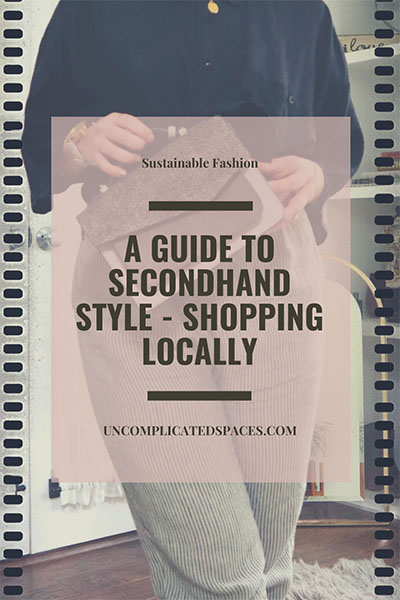

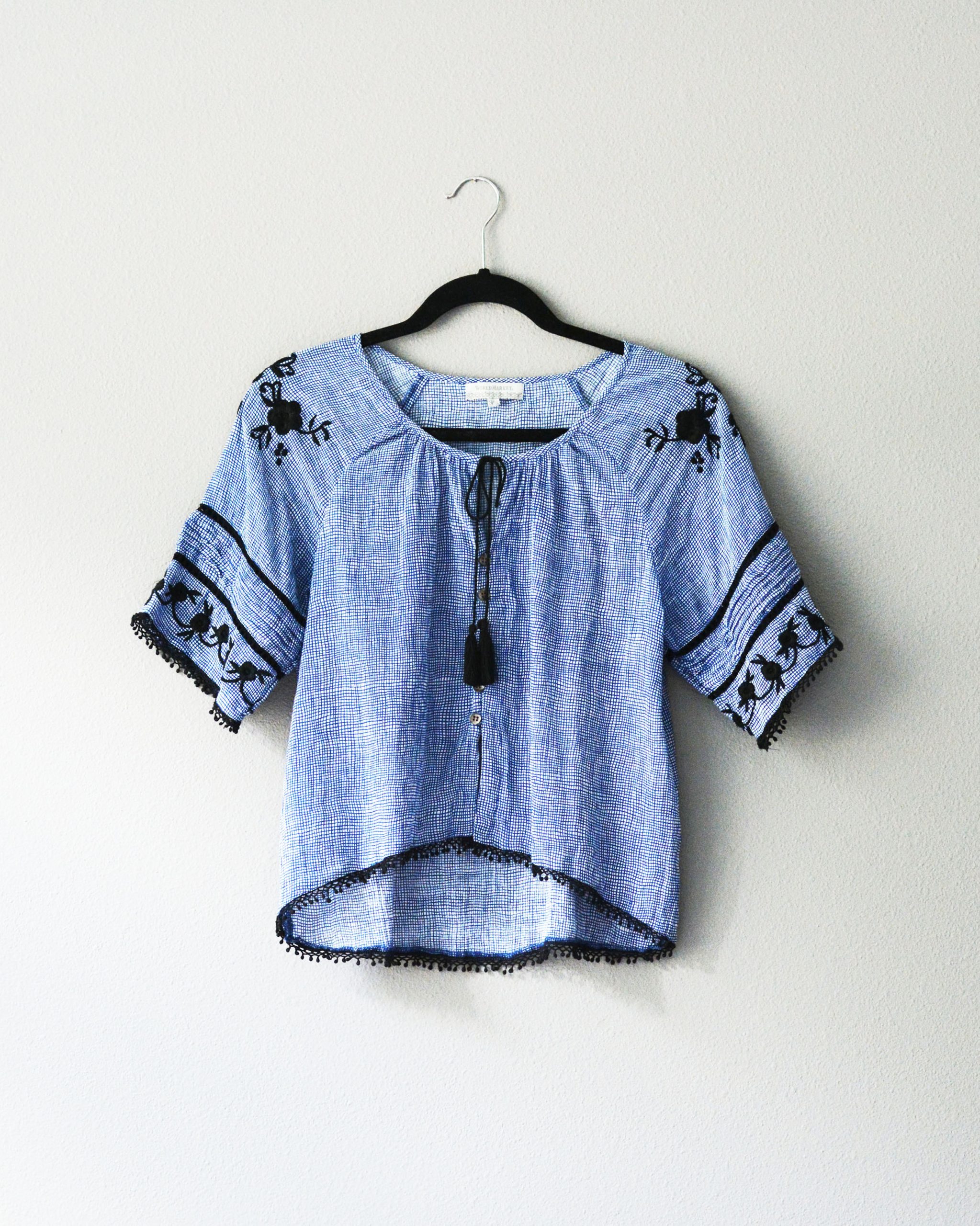
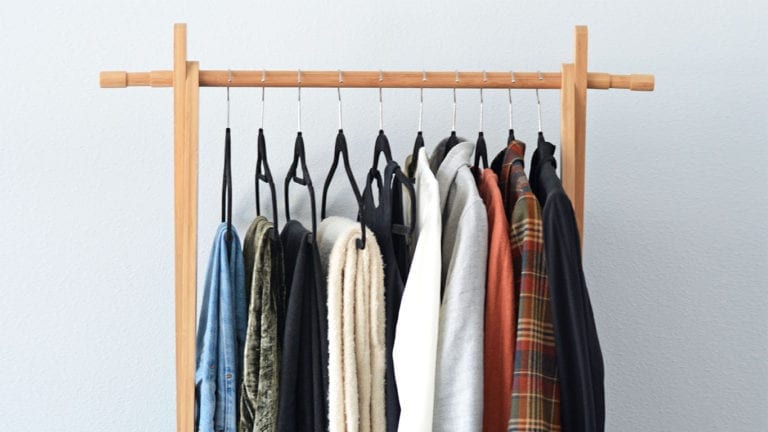
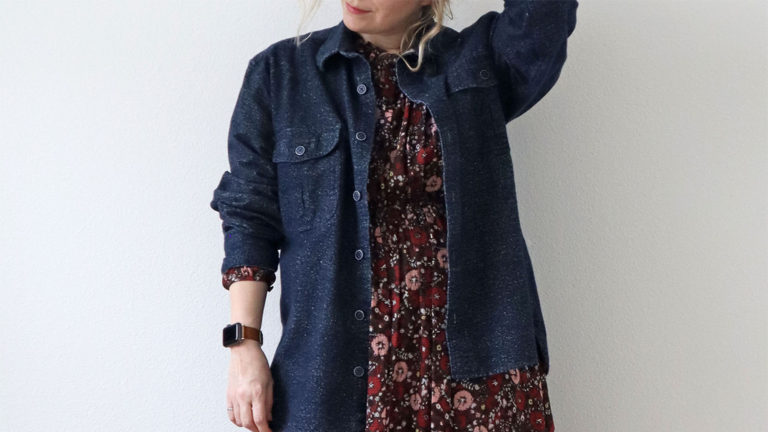
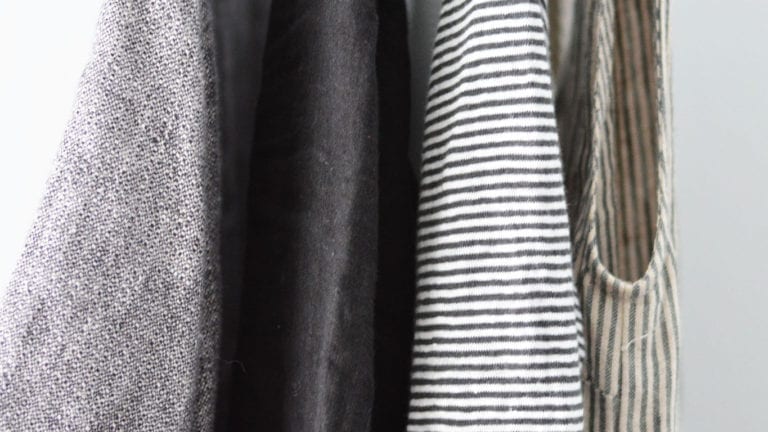

Pingback: Building a Sustainable Wardrobe with Natural Fabric Clothing - Uncomplicated Spaces
Pingback: HOw To Update your Wardrobe by Shopping SECONDHAND - Uncomplicated Spaces
Pingback: 9 Tips for Quitting Fast Fashion - Uncomplicated Spaces
Pingback: 2 Fun Fashion Sustainability Initiatives to Try - Uncomplicated Spaces
Pingback: A Sustainable Wardrobe - 9 Easy Ways to Get Started - Uncomplicated Spaces
Pingback: Weekly Outfit Roundup (9/24-29) - Uncomplicated Spaces
Pingback: A Guide to Secondhand Style - Online Shops - Uncomplicated Spaces